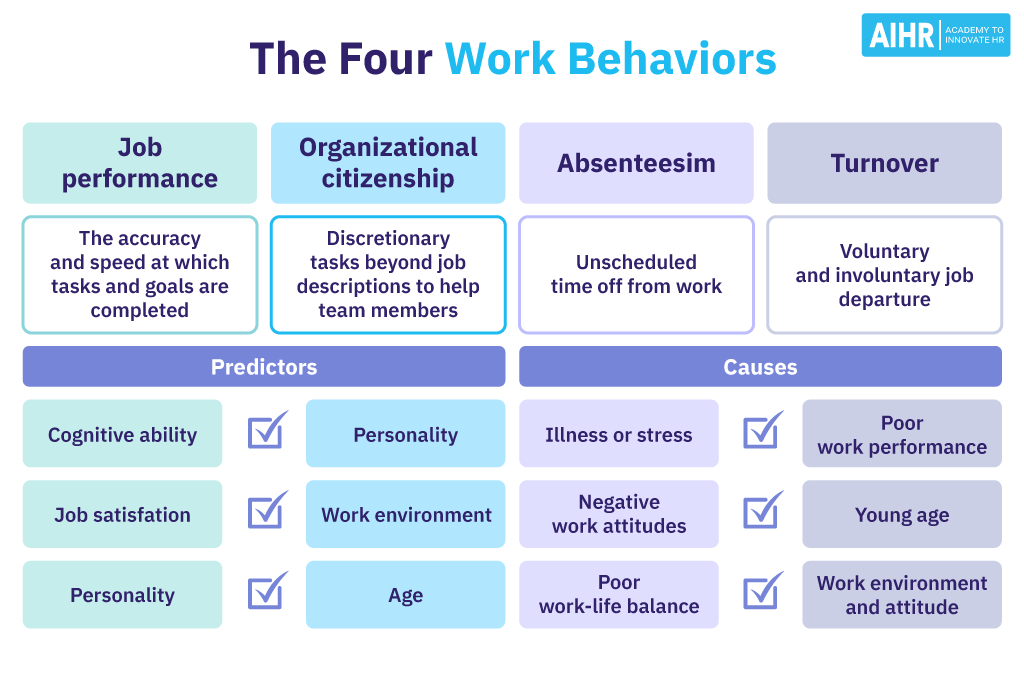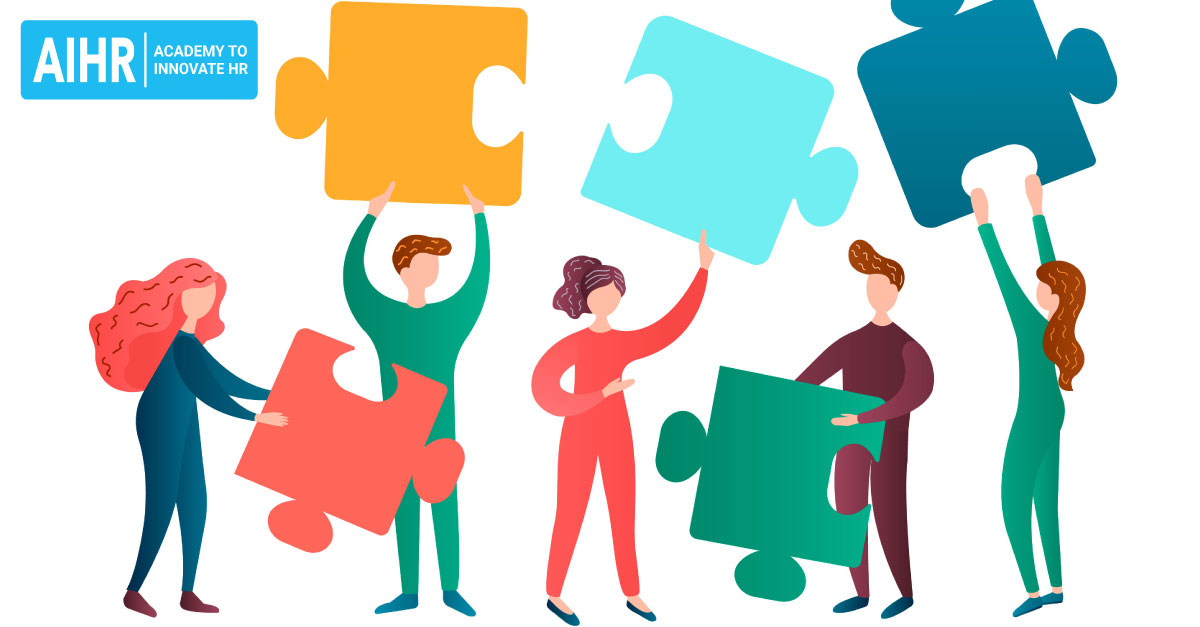Work Behavior
What is work behavior?
Work behavior is how people complete their daily tasks and accomplish goals in the workplace. This includes physical actions as well as demeanor and attitude. In other words, it refers to how people act at work.
HR’s knowledge of work behavior and how to manage it is crucial to a company running smoothly and retaining talent. In fact, 86% of workers would not apply for or stay with a company that has a bad reputation with former employees or the public.
What are the four work behaviors?
Work behavior is a broad term that covers all workplace actions, but it is best understood by separating it into its four key behaviors.
- Job performance: Job performance is the accuracy and speed at which employees accomplish their tasks and goals. The predictors of job performance include cognitive ability, job satisfaction, personality, and stress.
- Organizational citizenship behavior: This behavior refers to the discretionary tasks employees complete over and beyond their job description to help others on their team. Tasks such as volunteering for a new project or helping a new employee are examples of organizational citizenship behavior. Personality, work environment, and age are predictors of this behavior. Older employees are shown to display more organizational citizenship behavior.
- Absenteeism: Absenteeism refers to unscheduled time off. This can be due to illness, stress, negative work attitudes, or poor work-life balance.
- Turnover: This includes both voluntary and involuntary turnover. Both voluntary and involuntary turnover have similar root causes, including poor work performance, young age, work environment and attitude, and stress.

Types of work behavior
Work behavior can be broken down into different positive and negative behaviors that affect an employee as well as the organization as a whole.
Positive work behaviors
- Appropriate work behavior: It is imperative for employees and employers to behave professionally and work together to complete tasks.
- Ethical work behavior: Ethical work behavior is a set of morals, values, and social guidelines employees and employers must follow. Examples include following company rules and regulations, taking accountability for one’s actions, professionalism, and fostering trust and respect.
- Proactive behavior: A proactive employee will be a self-starter. They will do their job without needing instruction. Also, they will often take steps to make things happen rather than wait for something to happen.
- Collaborative behavior: Individuals exhibiting collaborative behavior will work with their team to accomplish their goals. They will communicate clearly, accept criticism, and actively listen to other members to reach the optimal outcome.
- Self-motivation behavior: Self-motivated employees take initiative and are driven to achieve their goals. They have a positive work attitude.
Negative work behaviors
- Counterproductive work behavior: Counterproductive work behavior (CWB) covers many maladaptive behaviors that hinder goals and productivity. CWBs can be broken down into Organizational CWBs and Interpersonal CWBs.
- Organizational CWBs: Organizational CWBs are counterproductive behaviors directly affecting the company or organization. These include theft, sabotage, and other actions that undermine the company’s productivity.
- Interpersonal CWBs: Interpersonal CWBs are counterproductive behaviors that affect an individual. Examples of interpersonal counterproductive behaviors include harassment, bullying, gossip, and aggression.
- Inappropriate work behavior: Inappropriate work behavior is a blanket term covering all forms of counterproductive behaviors and actions that are not in line with the company’s guidelines.
The Enron scandal is a well-known example of counterproductive work behavior in the workplace. This scandal involved a number of unethical and illegal practices, including fraud, embezzlement, and deception, which ultimately led to the downfall of the company.
Enron executives engaged in a series of financial manipulations and accounting fraud that misled investors and caused the company’s stock prices to plummet. The scandal highlighted the serious consequences that can result from counterproductive work behavior.
How can HR manage and influence behavior in the workplace?
Understanding workplace behavior is imperative to the company running smoothly. Workplace behavior affects all aspects of a company, including profit margins. According to Forbes, employee misconduct can cost US companies as much as $20.2 billion per year.
As an HR professional, there are several steps you can take to manage and influence workplace behavior.
1. Select candidates who are a good fit
Having a cohesive team begins in the hiring process. During the interview, pay attention to how the candidate presents themselves. Ask questions pertaining to a candidate’s values and character, such as how they feel about gossip in the workplace.
2. Develop clear rules and guidelines for workplace behavior
Providing clear rules and HR policies about what is acceptable leaves little room for interpretation and informs employees of acceptable behaviors.
3. Provide training
Employee behavior training is an excellent way to set standards, educate, and build team morale. Through training, employees learn how to handle workplace situations and build self-awareness.
4. Resolve conflicts
Despite everyone’s best efforts, work conflict is sometimes inevitable. How HR handles the conflict is critical. The first step is identifying the problem.
After investigating the incident and interviewing all parties involved, HR can develop a clear action plan, whether that is mediation or company policy implementation. It is important to remember consistency is key.
HR tip
De-escalating a situation is the most effective way HR can diffuse conflict in the workplace. To do so, keeping a neutral tone and avoiding labeling or accusatory language is crucial. All parties must feel safe and comfortable to express themselves.







